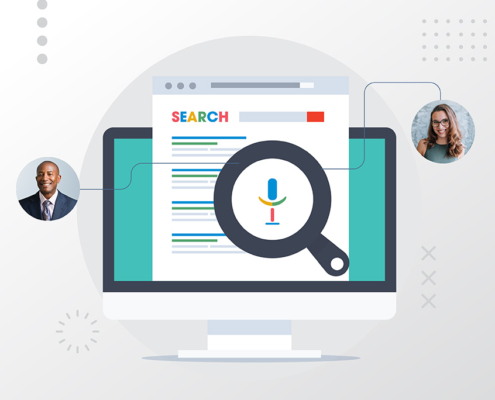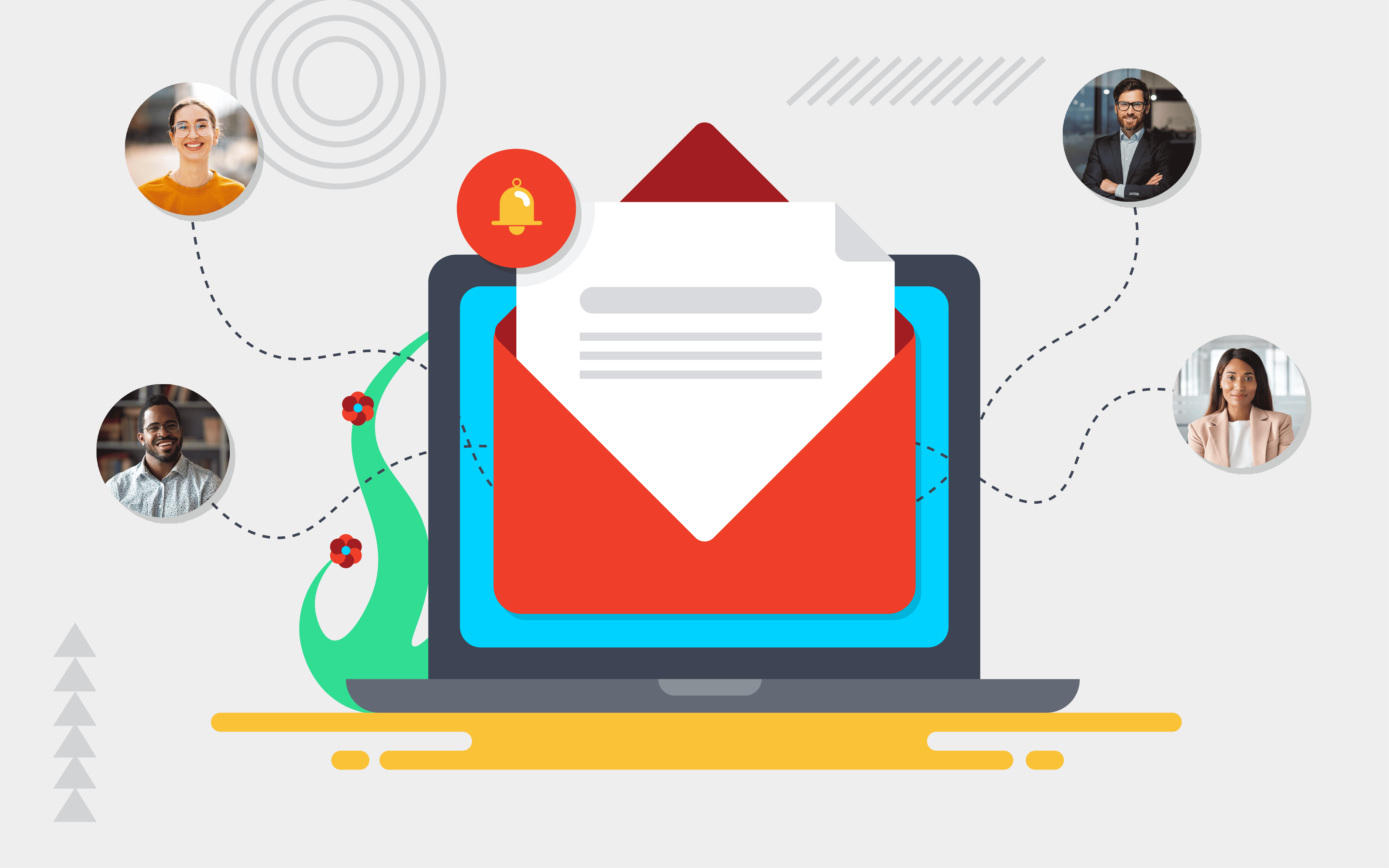

Email marketing is irreplaceable. In fact, it’s growing now more than ever as one of the best avenues for lead generation. Because of this, marketers are constantly trying to figure out the magic trick to make users open their emails and engage with their content. However, engagement isn’t possible if the content doesn’t make it to the recipient’s inbox. That’s why the question of deliverability is fundamental for any successful email campaign.
High deliverability gives your emails a high chance of being seen and opened, increasing your ROI and improving other important metrics. This comprehensive guide will answer most of your questions about email deliverability and give you tips to improve yours. Ready? Let’s start by explaining what email deliverability is.
Understanding Email Deliverability
Email deliverability is the art of ensuring your emails reach the recipient’s inbox. This is an important metric in email marketing because it indicates the percentage of the emails that made it to your subscribers.
While it’s impossible to achieve 100% deliverability, a lot can go wrong if most of your emails end up in the spam folder.
Current industry standards consider a delivery rate of 95% or more as the acceptable threshold. But here’s the catch that marketers and business owners should know: delivery rate doesn’t necessarily equal deliverability. However, the delivery rate affects deliverability.
Your campaign can have a whopping 98% delivery rate but perform poorly if a big chunk of your messages are delivered to the spam folder. Delivery rate is important, but deliverability is crucial. Deliverability measures the number of delivered emails that the recipient servers placed in the inbox folder.
If you want to create a B2B email marketing strategy that yields long-term results, read our blog here to learn all you need to know.
What Affects Email Deliverability?
Before we can show you how to improve email deliverability, it’s vital to understand what tells the server, “Hey, that looks perfect; it goes to the inbox” or “Hello, that belongs in the spam/junk folder!”
Some of the factors that significantly affect deliverability are:
- Sender reputation: This is how trustworthy your organization is. It’s measured using the sender score, which is usually expressed on a scale from 0 to 100. This score is determined by your delivery rate and subscriber engagement (open rate, clickthrough rate, complaints, etc.). You can check your score on senderscore.org, and if it’s above 70, you’re in good standing.
- Domain: Your domain name or IP address can affect your deliverability. If many people are complaining about your emails or your IP has been blacklisted, your deliverability will drop dramatically.
- Subject lines and content: Spam trappers are continuously learning the subject lines and messages spammers like using. If you send messages with vague, spam-like subject lines or content, servers might label your emails as junk.
- Poor user experience (UX): If your subscribers can’t locate the unsubscribe button or the process of unsubscribing is tedious, internet service providers (ISPs) are likely to punish you by making it harder for your messages to reach recipients’ inboxes.
These and other factors, such as unfitting email design, mail lists with fake/invalid emails, or shortening your URL (a common trick used by spammers), can have detrimental effects on your deliverability.
Abstrakt’s BDRs have the expertise to craft and send quality sales emails that reach the right inboxes. Explore how our outbound B2B appointment setting solution can help you generate more sales via email.
Top 10 Tips To Improve Your Email Deliverability
Email deliverability has several moving parts, and the best practices keep changing as spam filter algorithms get more sophisticated by the day.
Through our extensive research on email marketing deliverability best practices, we’ve come up with these ten solid recommendations for your business. If you’re unsure how to apply them or need some extra help, reach out to the outbound email marketing experts at Abstrakt.
1. Maintain a Good Sender Reputation
The first part of getting as many emails in the inbox as possible is continuously improving your sender reputation. The first thing spam filters consider is your domain’s score. Start by going back and analyzing your past campaigns. See where you probably left a bad track record and devise a way to correct these mistakes in the future.
2. Adopt Audience Segmentation
There’s a thin line between cold mailing and spam. If you want to be a good actor, you need to make your emails look different from other unsolicited emails. You can make sure your cold emails aren’t viewed as junk by validating the recipients’ addresses and personalizing the content through segmentation.
Audience segmentation allows you to group your recipients based on demographics, interests, and location. You can then send emails to these groups that they can personally relate to. At the same time, you avoid getting trapped as a spam sender by sending a small number of messages at a time.
B2B email marketing best practices don’t just stop at segmentation. Read our blog here to explore all the different email marketing tactics your growth teams should be following.
3. Mind Your Subject Lines and Content
Every marketer will tell you that your subject line and content matter. Your choice of words has great potential to influence your deliverability—69% of recipients judge emails as spam merely based on the subject line. If you use the same language as spammers, your emails probably won’t pass the spam filters. Your sender score will go down if receivers fail to engage with your emails due to poorly written content.
Improve your email deliverability by curating your subject lines and messages professionally and appropriately:
- Avoid using all caps in subject lines or anywhere else in your email. While your email will be noticed, many will report it as spam and delete it. In fact, one survey found that about 85% of people would prefer all-lowercase subject lines to all caps.
- Reduce the usage of exclamation marks (!!!), and don’t use more than one anywhere in the email.
- Pay close attention to your choice of words. Some words automatically trigger the spam filters, including free, guaranteed, freedom, or any other expression synonymous with common spam words in your industry.
- Keep your formatting consistent. Avoid using different font sizes or funny font colors (e.g., red), and use an easy-to-read font.
- Remember to check your grammar and spelling. Bad spelling not only shows unprofessionalism but can also be a spam trigger.
- Write for humans and not robots. Don’t dump all possible keywords in one email; rather, write something similar to how you would naturally have a conversation with the recipient.
4. Conduct Experiments and Testing
The core of successful email marketing is continuously experimenting to find the strategy that works for you. Testing your email deliverability can also give you invaluable information on where you need to improve.
5. Validate Your Mail List
Keeping fake, invalid, and inactive email addresses in your mailing lists can ruin your campaigns now and in the future. Bad emails cause hard bounces, which reduces your sender score.
An address that hasn’t engaged with your content in years is bad for deliverability. Also, remember how delivery rates affect deliverability—if more than 5% of your emails bounce, your sender score will start going down the drain.
You can maintain a clean and up-to-date database by removing mail bounces. You can also identify inactive subscribers and try to re-engage them before you decide to remove their addresses permanently.
6. Use the Double Opt-in Method
This method involves sending a follow-up email to confirm that a new subscriber actually wants to receive emails from you.
You stand to gain a lot by using the double opt-in method. First, you’ll be certain that the people in your database actually want to receive your emails, so you have a higher probability of improving your email engagement metrics.
This method also ensures the hygiene of your list. By sending a confirmation message, you can be sure that you’re not adding disposable or one-time addresses to your database. This also saves revenue you could use to clean the list later.
7. Give Your Subscribers the Opportunity To Opt Out
ISPs require email marketers to give subscribers a way to unsubscribe. Essentially, it’s illegal in the U.S. to not provide a way for people to unsubscribe from your mailing list.
The best place for your unsubscribe button is at the footer of the email. Make the process of unsubscribing as simple as possible, or recipients will start marking your emails as spam or deleting them, which is not good for your deliverability.
Also, remove those who have unsubscribed from the list as soon as possible, and don’t add them later.
Bonus tip: On your unsubscribe page, you can let the user choose which kind of emails they want to unsubscribe from. For instance, a person might not like promotional emails, but may still want to receive newsletters. Keep them, and they might convert in the future.
8. Pay Attention to Images, Attachments, and Scripts
Mail servers react differently to emails that contain images, attachments, or scripts. Some of the recommended best practices are:
- If your email has images, use the smallest file size possible, and don’t clutter the email with one big image or too many of them. Pictures can make your email load slowly. If you decide to use images, don’t forget to include alt text.
- Avoid attaching files to the email as much as possible. Instead, upload the file to your website and share a link to the file. Emails with attachments might get flagged as spam. Also, remember not to use URL shorteners for your links, as that can also be a spam activator.
- Most mail clients don’t allow JavaScript or other scripts. Besides, emails with scripts can easily be flagged as spam. The same goes for embedding forms.
9. Make Sure Your Domain Is Legit
If your IP address is on the blocklist, a lot of your emails will bounce, and those that get through won’t make it past the spam filters. You can check whether your IP is on the deny list on DNSstuff.com.
Additionally, you can get a third-party accreditation that gets you on the trusted list. ISPs reference this list to determine whether certain emails can be allowed past filters.
10. Engage Your Audience
Your subscribers are the greatest asset you have. The more you engage them, the more you improve your sender score, earn conversions, and get referrals.
Keeping them engaged requires a variety of strategies, including:
- Create emails that are creative, precise, and straight to the point.
- If possible, use a real name as the sender, e.g., John from Sapper Consulting.
- Know when to send your emails to get the highest possible open and engagement rates.
- Don’t send emails too frequently or too infrequently. We recommend adopting a predictable schedule, e.g., twice a week on Tuesday and Thursday.
Key Takeaways
Email deliverability plays a critical role in a successful email marketing strategy; therefore, it’s important to know the best email deliverability tips to get the most impact from your growth experts.
At Abstrakt, our BDRs are well-versed in all things email marketing, ensuring our clients’ cold emails are delivered to the right inboxes at the right time. When you’re ready to get the most impact from your B2B cold email appointment setting efforts, contact the experts at Abstrakt!


